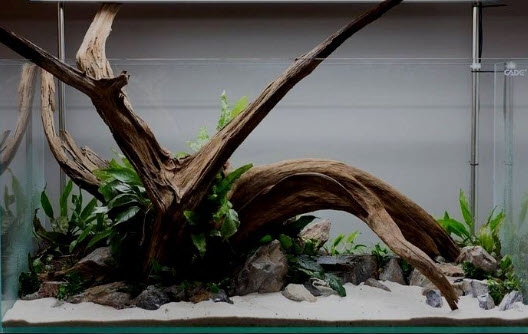
All dead wood, dry or wet, that does not smell like sap is fine just as is in any aquarium. I just throw driftwood or wood from the woods around me into my aquariums and see what happens. Some wood will deteriorate rapidly and smell and must come out. Other wood will last for years. Boiling or baking wood accomplishes nothing. The wood will not have fish pathogens on it.
Tannins will only be removed from the very top layer of the wood by boiling. Some wood will need carbon in the filter to remove the tannins (note that scientific studies have shown the carbon to be effective anywhere from 3 days to 30 days), some will not (some hobbyists like the brown color of tannins).
There is one caution. Smell wood that is purchased in a store and if it has a chemical smell don’t use it. Some idiotic (*%!#*!&*#$ bleep bleep) suppliers of wood for the pet store trade have started oiling their wood to make it more attractive. This oil (?) has killed all the fish in a few aquariums.
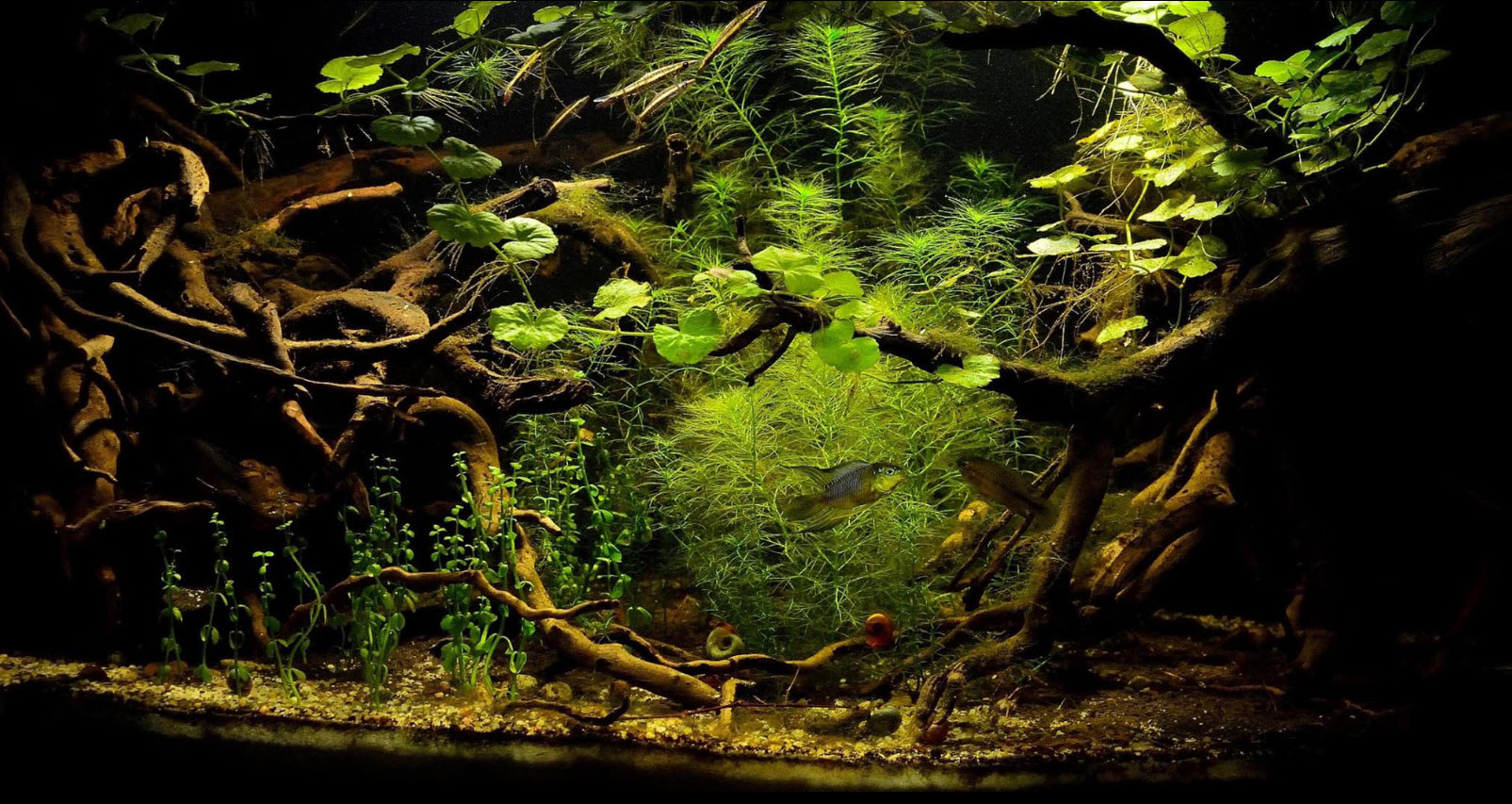
Wood is much like rocks when it comes to the aquarium. There are a huge number of myths parroted on social media about wood.
- Myth #1 Some Wood is Poisonous
- Myth #2 Boil Wood to Kill Pathogens and Remove Tannins
- Myth #3 Wood will Drop The pH Significantly
- Myth #4 There can be Significant Salt in Driftwood from the Ocean
- Myth #5 Wood is Often Contaminated
- Myth #6 Tannins can be a Problem
- Myth #7 Boil the Wood to Make it Sink
- Myth #8 Wood Should be Sterilized with Bleach
- Myth #9 Decomposing Wood can Cause an Ammonia, Nitrite or Nitrate Spike
- Myth #10 Only “Hardwoods” are Suitable for the Aquarium
Note this list started out as four myths. Also note that, unless one is a complete nerd like the author, I highly recommend skipping to which ever myth interests you rather than reading the whole article. This whole article will definitely put most people to sleep.
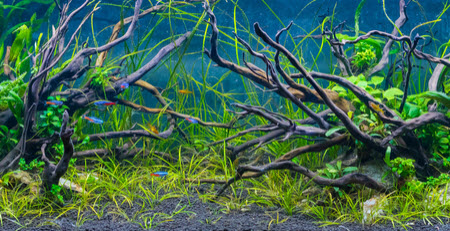
Myth #1 Some Wood is Poisonous
No wood, including pine, can kill fish if it has been dead and sitting in the sun for even a few months. There is NO wood which has been weathered by even a few months of exposure to the elements which is poisonous to fish. NONE.
Many folks come up on social media and say this wood or that wood is poisonous. Black walnut trees, lilacs, rhododendrons, azaleas, yews and some cherries have poisonous leaves. But the wood only has very small amount of the toxin in it. So a fish would have to eat sizable quantities of the wood to be poisoned. Last time I checked most fish don’t eat wood (except for plecos which can get some harmless amounts of wood in their stomachs).
There are some organic compounds (“turpentine”) in freshly cut pine wood (so called “sap”). These pine compounds are toxic to fish but all are very pungent. The toxic polyoxyphenols in wood such as cedar which gives this wood its insect resistant properties are also very pungent. All these compounds will evaporate from any dead wood exposed to the sun and the elements pretty quickly.
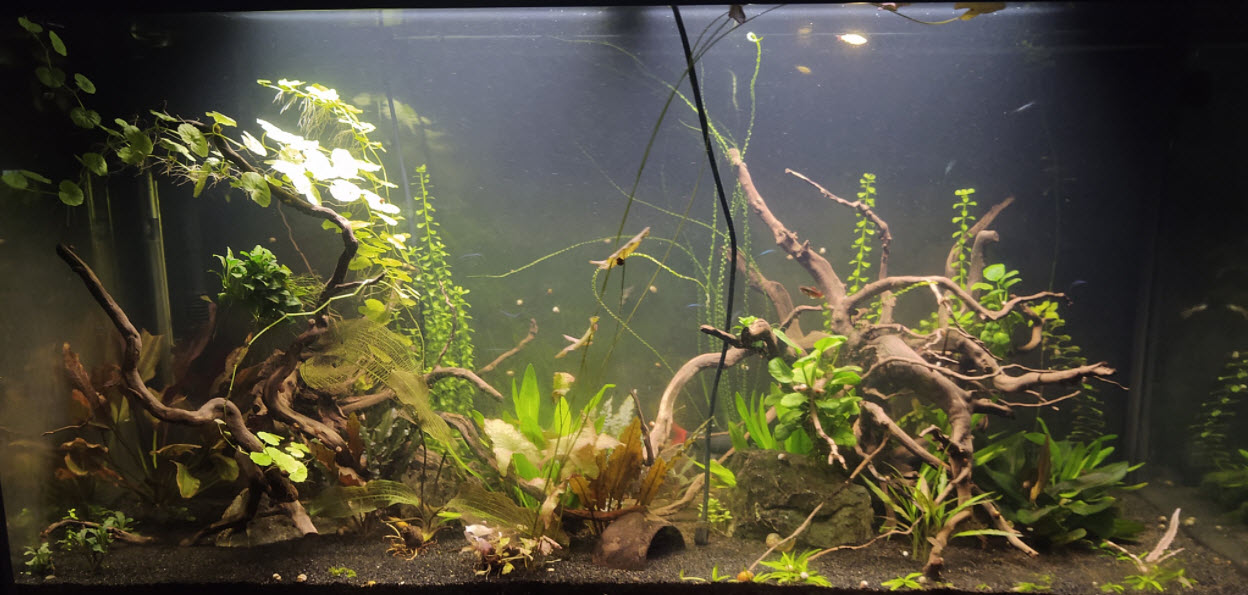
But fresh cedar can be a problem, as can fresh pine.
“Aqueous Leachate from Western Red Cedar: Effects on Some Aquatic Organisms”, Peters1976
“Water-soluble extractives from western red cedar heartwood, bark, and foliage were investigated for their toxicity to aquatic organisms. The heartwood lignans and bark extractives were found to be moderately toxic, but the foliage terpenes and heartwood tropolones were more toxic, causing 50% mortality to coho salmon (Oncorhynchus kisutch) fry at 0.33 and 2.7 mg/liter, respectively.”
But these compounds are water soluble. And they evaporate in air (thus the cedar smell). So dead wood which has been out in the rain for a while and doesn’t smell is harmless.
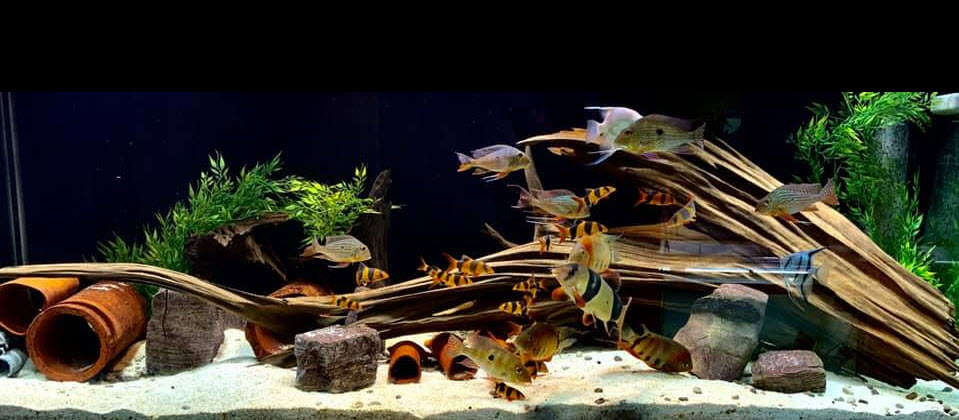
Some say the wood from the various Australian eucalyptus trees is poisonous. The same people will swear Melafix does a great job with fish in the aquarium. This smell of this medication is the smell of eucalyptus trees. This is because the “tea tree oil” in the medication is from a Melaleuca, a close cousin to eucalyptus. Because the tannins in the leaves of the eucalyptus have been found to be poisonous to zebrafish in high concentrations, I would probably avoid any eucalyptus wood which smells strongly, just like pine and cedar. It is probably harmless but why risk it.
Others will swear that a type of wood found in the Outback of Australia called “mulga wood” is poisonous. A commentator to this website turned out to be from the Outback in Australia (and I thought there probably wasn’t one aquarium in the Outback … my bad!) and has successfully used mulga wood in his aquariums for years with no problems. So the concept that mulga wood from the outback is poisonous is a myth.

The paranoia about poisonous wood is pervasive in the internet. There are several websites listing ten or twenty “poisonous” woods. To illustrate the parroting, most of them list “hemlock” as being a poisonous wood. Yes, it is true that “hemlock” is the poison Socrates took to commit suicide. But there are two plants with the name “hemlock”. One is an herb that gives us the poison called hemlock poison. And one is a tree which gives us hemlock wood. From Wikipedia:
“Conium maculatum, the hemlock or poison hemlock, is a highly poisonous biennial herbaceous flowering plant in the carrot family”
“Tsuga is a genus of conifers in the subfamily Abietoideae. The common name hemlock is derived from a perceived similarity in the smell of its crushed foliage to that of the unrelated plant poison hemlock. Unlike the latter, Tsuga species are not poisonous.”
The wood and the herb are in no way related. Yet many websites will tell you hemlock wood is poisonous. It isn’t!
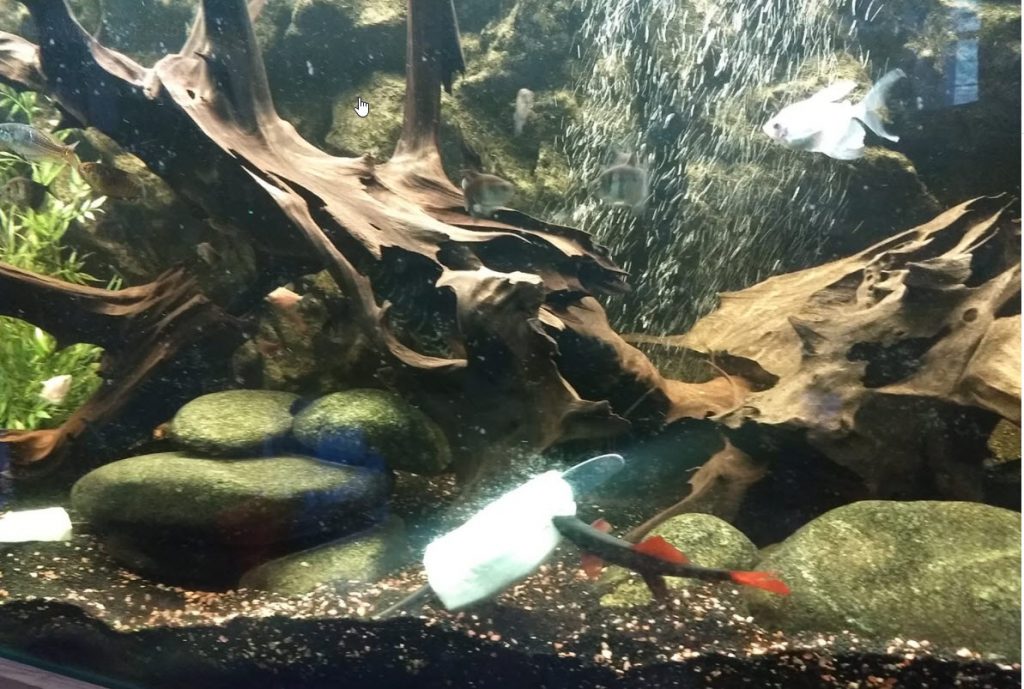
Other woods are irritants and can cause allergic reactions in humans. This does not mean they are toxic in any way to fish.
And one will see social media comments like:
“I put two pieces of driftwood in my tank and the next day all my fish were dead. Never again”
Or:
“I had a piece of driftwood that actually made my nitrates and ammonia spike and killed 40 fish I thought it was my water I got a thing to filter everything out of my water I can’t think of name of it but it still didn’t work so I pulled out the driftwood and it went to normal. Just a thought because my drift wood was in a aquarium before mine and I boiled and baked it and it still did that.”
There is an old saying in science “correlation is not causation”. These persons, like most, probably changed the water at the same time as they put in the wood. If they are on a chlorinated water supply their water supplier had done something called a “chlorine pulse” which overwhelmed their water conditioner and killed their fish. If they are on well water the water was very low on oxygen and/or very high on carbon dioxide. And a myth is born!

Myth #2 Boil Wood to Kill Pathogens and Remove Tannins
Many recommend boiling driftwood, supposedly to kill all the pathogens in the wood. This doesn’t make too much sense. Any fish you add to your tank will have a million times more pathogens than a piece of wood. The great fish researcher Diana Walstad did a literature search which revealed almost all fish pathogens are found on most fish in the aquarium trade. And you can’t sterilize a fish.
And boiling wood will only remove the tannins from the very top layer of the wood. The tannins deep in the wood will typically leach out over months and sometimes years even if the wood is boiled.
Boiling wood will break down the wood structure and cause the wood to soften. Boiled wood CAN in some cases deteriorate much quicker in an aquarium than unboiled wood.
Yes, the wood might have some insects and some worms in it. These make great food for fishes and are decidedly not fish pathogens. They will die rapidly in any aquarium.
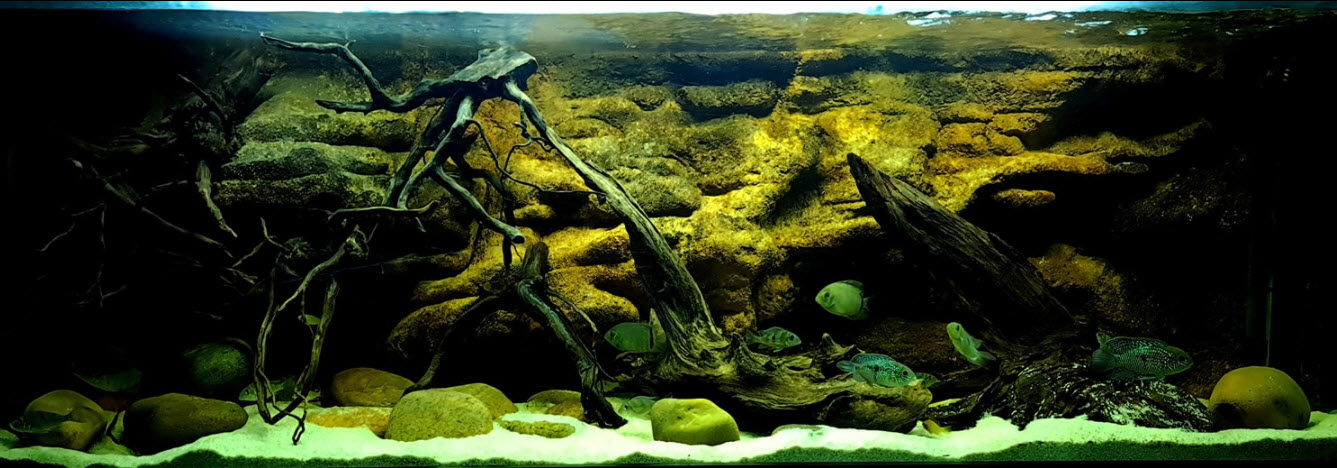
And wet wood from a freshwater stream might have hydra or planaria in it. But the chance of that happening are much less than the chance of a plant from your local fish store having planaria or hydra on it. Since hydra and planaria are typically only a problem in shrimp tanks, if one has shrimp one might consider soaking wet wood from a stream for several days in hydrogen peroxide or potassium permanganate solution.
Note that many, including the author, deliberately use wet wood (and mud!) from lakes and streams to introduce organisms into the aquarium. The greater the biodiversity in a fish tank the healthier the aquarium will be. If one strives for a sterile aquarium one will only achieve an aquarium with a lot of pathogens in it. This topic is covered in this article:
2.14. The Mature Aquarium
Do not boil the wood and do not use bleach. And baking a material which is combustible (such as wood) in an oven is asking for a fire. Don’t bake wood.
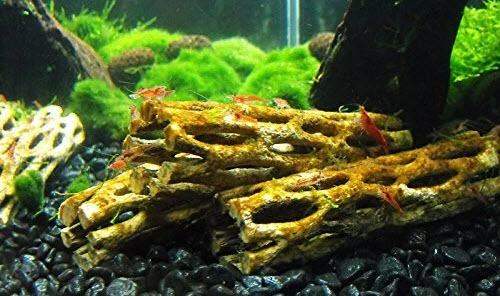
Myth #3 Wood will Drop The pH Significantly
Wood is just good old cellulose (C6H10O5)n. Cellulose can only slowly decompose into carbon dioxide which will have a very, very tiny temporary effect on pH. When the carbon dioxide gases out to the atmosphere the effect vanishes.
Some woods have tannic acid in them which is a weak organic acid. In the amount that leaches out from most woods the drop in pH that will result is typically very small, especially if there is any hardness in the water at all.
Note that many will come on social media and say things like “wood in my aquariums dropped the pH from 7.6 to 6.6 and dropped the KH four points.” A pH drop from 7.6 to 6.6 is INCREDIBLY tiny as pH is a logarithmic relationship centered around 7.0. And KH, pH and carbon dioxide in ANY water body is an incredibly unpredictable set of interrelated parameters that can vary very randomly for no apparent reason.
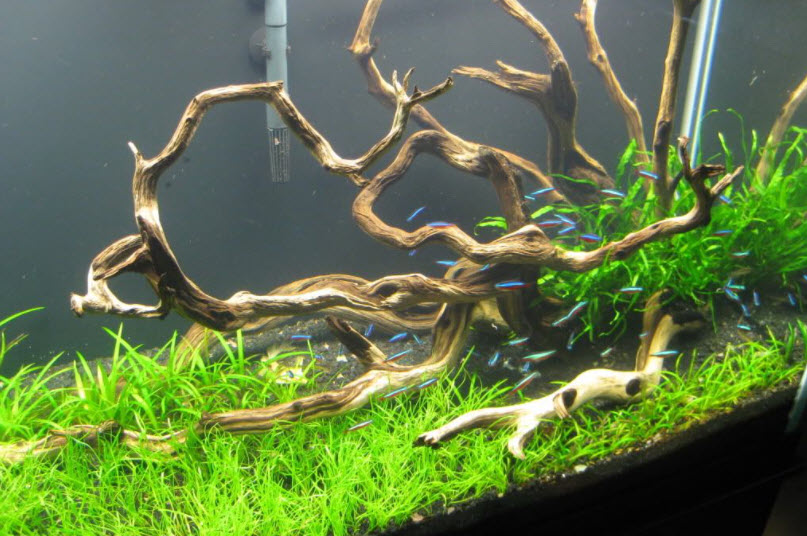
Myth #4 There can be Significant Salt in Driftwood from the Ocean
Ocean driftwood might have a small amount of salt on it. It’s not enough salt to be of any concern in any tank. The same folks that tell you to boil sea driftwood to remove the salt are the folks telling you to add salt to a freshwater tank as a healthy tonic. Small amounts of salt are harmless to all freshwater fish, including those from the Amazon such as corydoras.

Myth #5 Wood is Often Contaminated
And how many people take sprayers full of insecticides and herbicides, go down to the local water way, beach or woods, and spray the dead wood lying around? So worrying about pesticides or herbicides on the wood is not warranted. In any case insecticides kill insects, not fish. If one’s fish have anchor worms one treats the anchor worms by adding an insecticide to the aquarium. And modern insecticides only have lifetimes measured in hours or days.
Some herbicides are poisonous to fish in large quantities. But they all break down rather rapidly in the environment so, unless one has sprayed them a few hours before, wood sprayed with herbicide will be safe. In any case wood found in the woods, on a beach or in a stream is not going to have herbicides on it.
And the only “rivers” that are so polluted that wood from the water is even slightly questionable as to contamination would be a few small streams draining mines in the Rocky Mountains. If a stream has fish swimming in it, wood from that stream is fine for the aquarium.
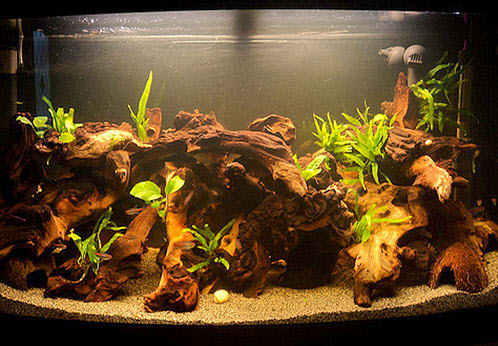
Myth #6 Tannins can be a Problem
Some woods do have an very weak organic acid called tannic acid in them. This is NOT a poison. It is harmless to the fish at levels seen in an aquarium. Tannic acid will color the water and lower pH very slightly (like 7.4 to 7.3). The only “problem” that tannic acid creates is the brown color. Temperate woods with tannic acid in them are manzanita, redwood, oak, cedar, cypress and beech. Woods with tannic acid in them will typically be dark brown in color as the tannic acid is dark brown.
Tannic acid is absorbed by both activated carbon and Purigen. Note that there are hundreds of different grades and forms of activated carbon. And the absorption capability varies considerable both with the type of carbon and the loading in the aquarium. So just add the carbon, then replace it when it stops removing the tannins, which might be in two weeks or might be in two months.
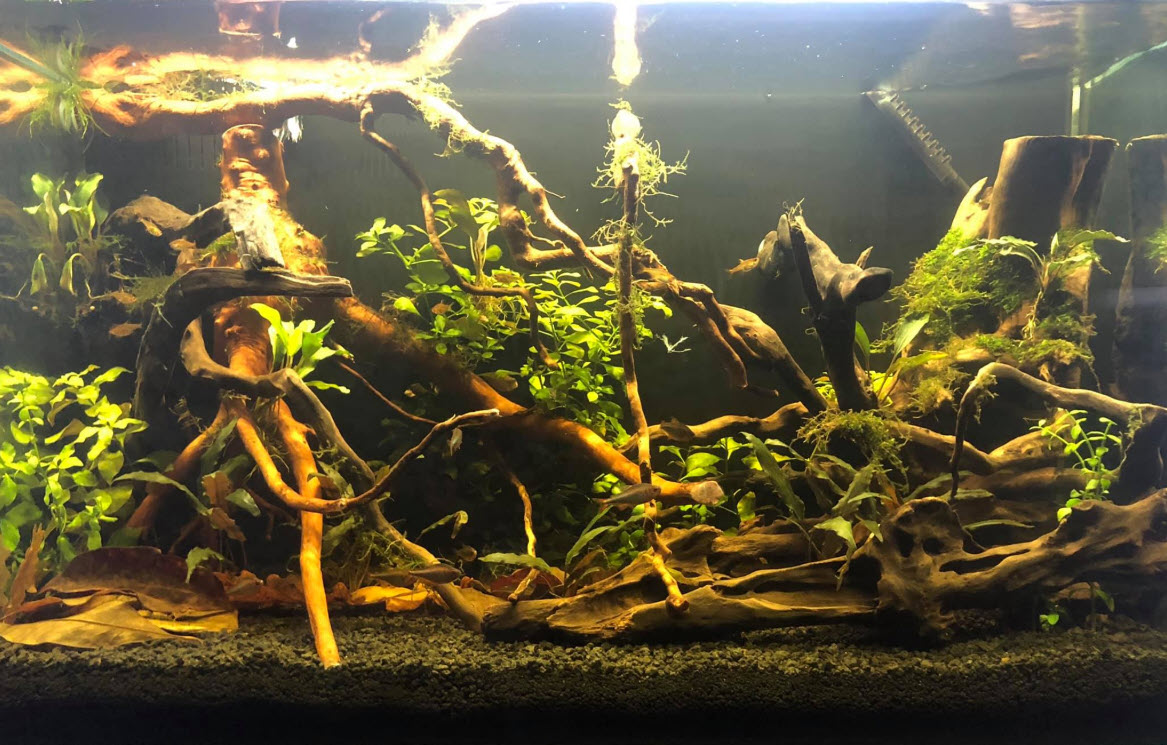
It is obviously very difficult to determine if a weathered piece of driftwood has tannins in it. If wood releases tannin, it is going to do it for years. So if you don’t want brown water and the wood starts releasing tannins, accept the fact that you will need to put about a tablespoon of fresh activated carbon in a bag in the filter every two weeks to two months for a long time.
Note that obviously the “tablespoon” amount is relative to a normal piece of oak. If one is filling a tank with a great deal of a very dark wood like manzanita you might be talking half a cup of activated carbon, changed out when it stops working.
Note that boiling a wood only takes the tannins out of the very thin top layer of the wood. The tannins inside the wood will be unaffected. So boiling a tannin filled wood is not productive.
Some people advocate leaving the tannins in because of their “anti-bacterial” and “anti-fungal” properties. This is a myth. Tannins need to be at a 2,000 ppm level in the water before there is any disinfecting properties. A tannin level of 2,000 ppm is deep dark brown water which you couldn’t even see through. There is more on this topic in this link:
17.5. Blackwater Fishes
.
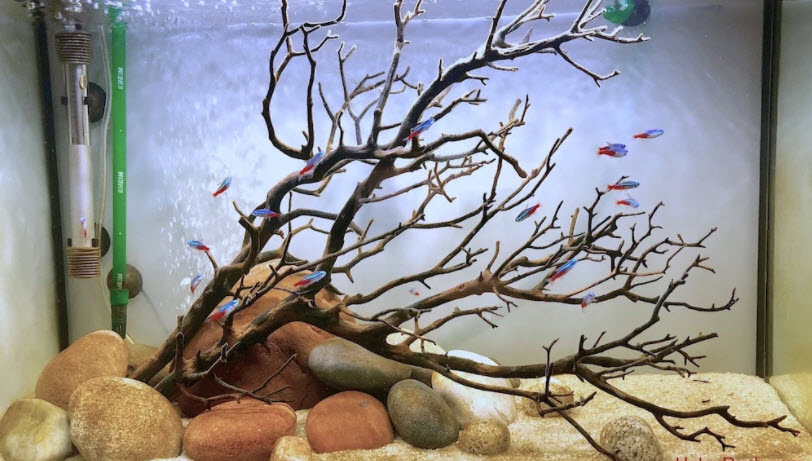
Myth #7 Boil the Wood to Make it Sink
If one is boiling wood to get it to sink be aware that that just plain doesn’t work. In order to get wood to sink it typically needs to be submerged for a long time. That’s why ocean driftwood is so weathered and bleached. It’s most often been floating for many months.
And boiled wood will be soft wood. Soft wood CAN, in some cases, break down faster in the aquarium. If wood floats in the aquarium the only good solution is to just weight it down with rocks or ornaments and wait.
Myth #8 Wood Should be Sterilized with Bleach
This is the most dangerous myth. Bleach can leave sodium hypochlorite in wood in such a way that conditioners won’t be able to neutralize it. Chlorine is a gas and conditioners are ionic. This chlorine can and has killed all the fish in an aquarium. In any case, why bleach something that has a million times fewer fish pathogens in it that any fish or plant?
If one has to sterilize wood it is recommended to use either hydrogen peroxide or potassium permanganate. Both these materials sterilize with nascent oxygen. Fish can take nascent oxygen much better that chlorine gas.
Note that many, including the author, deliberately use wet wood (and mud!) from lakes and streams to introduce organisms into the aquarium. The greater the biodiversity in a fish tank the healthier the aquarium will be. If one strives for a sterile aquarium one will only achieve an aquarium with a lot of pathogens in it. This topic is covered in this article:
2.14. The Mature Aquarium
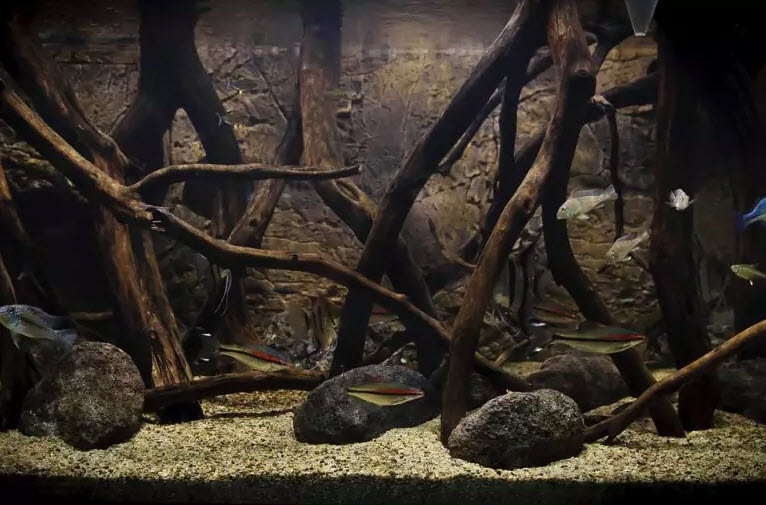
Myth #9 Decomposing Wood can Cause an Ammonia, Nitrite or Nitrate Spike
This just doesn’t make sense chemically. Wood is just good old cellulose (C6H10O5)n. Cellulose is composed of carbon, oxygen and hydrogen. There is virtually no nitrogen in wood which has no bark on it. Ammonia (NH3), nitrite (NO2) and nitrate (NO3) need nitrogen to form as they are composed of nitrogen with either oxygen or hydrogen. So ammonia, nitrite or nitrate categorically cannot be formed by wood decomposing.
In fact, just the opposite is true. A lot of wood in low tech Walstad planted aquarium will result in all the available nitrogen being absorbed by the water molds and fungi feeding on the carbohydrates in the wood. This is why Ms. Walstad recommends no wood be added to a Walstad aquarium. If you add wood, the plants won’t thrive because of a lack of nitrogen.
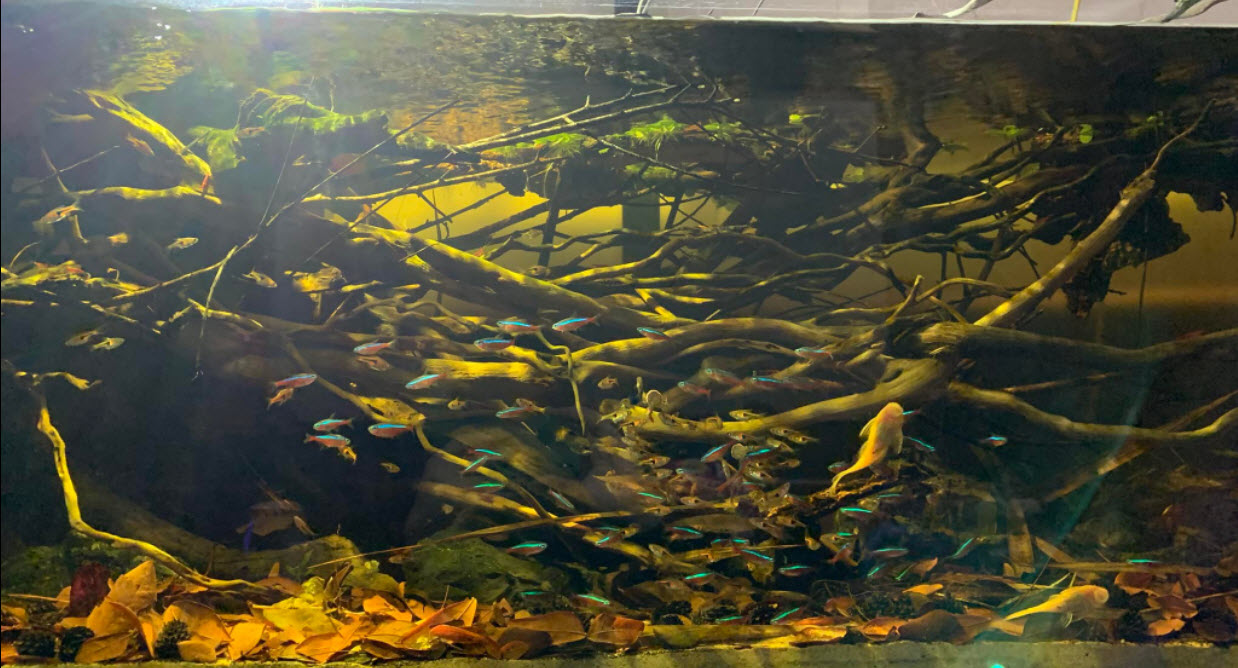
All living plants conserve nutrients like nitrogen quite efficiently. They HAVE to do this. Wood is NOT a living organism. Wood is dead. Bark is the living tissue. Bark cells slowly form the wood cellulose and as they deposit the wood the living bark cells vociferously remove all the nutrients from the wood, including all the nitrogen. Leaving significant amounts of nitrogen in something dead like wood would be rapidly “evolved” out of any tree species line due simply to Darwinian selection.
Sawdust comes from cutting up pure wood, not bark. And sawdust is used to make organic fertilizers. In order to use it is necessary to add considerable nitrogen. All organic gardeners and farmers know this fact.
That being said if the wood was used in a reptile tank previously or if the wood is treated to make it more attractive it can give off nitrogen compounds. So very rarely a purchased piece of wood can give off nitrogen compounds. And if wood is in an aquarium for a significant length of time (like months) then there can be a host of living organisms in the surface of the wood. These organisms will have proteins in their bodies. Proteins contain ammonia. So if the wood is taken out and dried for several months, then put back into an aquarium, an ammonia spike can possibly result. But this scenario is rare.
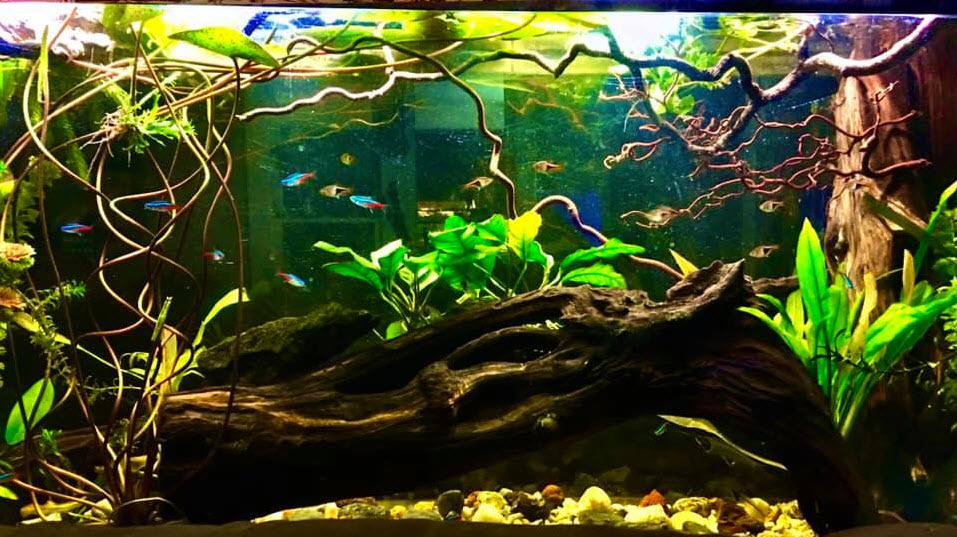
But, as in all things, some will question this analysis. Here is an actual comment
“Your statement that wood contains no nitrogen cannot be true. The wood was a living organism, and life cannot exist without nitrogen. More specifically, the nitrogen content of a wood is about 0.1%.(https://www.fpl.fs.fed.us/documnts/pdf1983/baker83a.pdf, and https://assets.thermofisher.com/TFS-Assets/CMD/Application-Notes/an-42151-oea-chnso-biomass-biofuels-an42151-en.pdf). That’s not that low. If I add a 1kg piece of wood to a 50-litre aquarium, I thereby add 1/50*0.001*1000000=20ppm of nitrogen. Of course, how much of this nitrogen can be leached and in what form is the big question.”
Interesting. To analyze this comment further one needs to define two types of “wood”. Let us define “log wood” as “wood” which, like a log of wood, has about 5% of its mass bark. Let us further define “lumber wood” as the wood used for lumber, with no bark on it. This barkless “lumber wood” is what is used in the aquarium. If one goes to the references one finds that they both define “log wood” as containing 0.06% to 0.08% nitrogen by dry weight. The first reference says bark alone has 0.3% nitrogen by dry weight. So the analysis becomes:
- Bark is roughly 5% of the mass of “log wood” by dry weight.
- Bark has easily 95% of the nitrogen
- So 50% of the nitrogen in “log wood” is in the bark and 50% is in the “lumber wood”
- This takes the amount of nitrogen in “lumber wood” to 0.03% to 0.04% by dry weight.
- The moisture content of newly sawn “lumber wood” is usually 40 – 200%, averaging 120%
- The takes the amount of nitrogen in completely dried “lumber wood” to roughly 0.01%
- This takes the amount of nitrogen of one kilogram of dry wood in a 50 liter tank to 2 ppm nitrogen.
- One kilogram (2 pounds) of dry wood in a 50 liter (12 gallon) tank is a huge amount of wood, A more reasonable figure is one kilogram of dry wood in 200 liters (50 gallons).
- This takes it to 0.5 ppm nitrogen
- The nitrogen in the wood will be tied up in proteins. These proteins will not migrate freely out of the wood. So the release of the nitrogen will occur over the lifetimes of the wood.
- Most pieces of wood last about three years or 1,000 days for me.
- This takes the nitrogen release to 0.5 parts per BILLION per day, hardly something which will create a “spike”.
- But wait, we’re not done. Since the carbon to nitrogen ratio in wood is about 1,000 to 1 the nitrogen will not be released as ammonia. Instead it will be “released” into fungi, molds or bacteria to form proteins in the cells.
‘nough said.
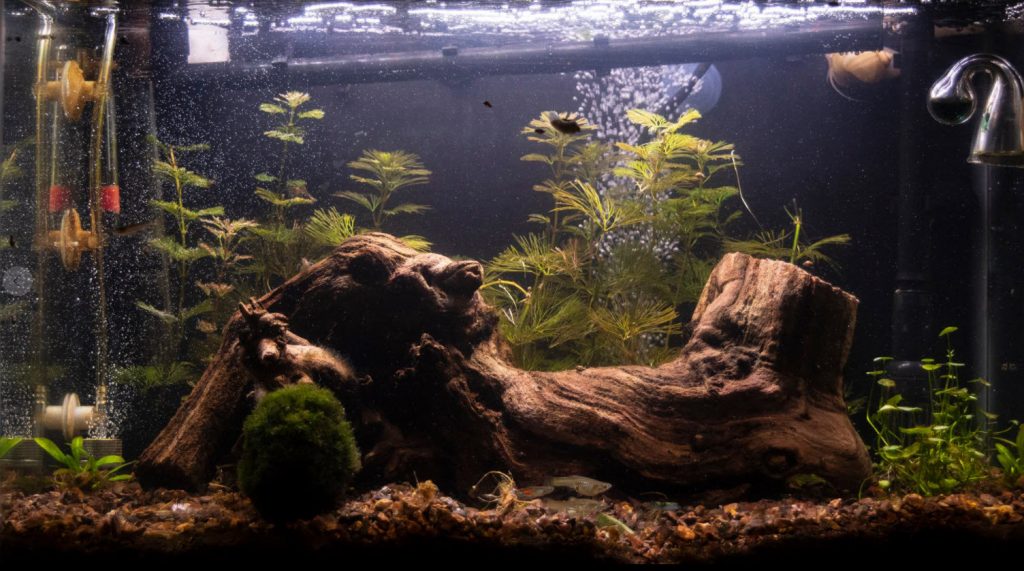
Myth #10 Only “Hardwoods” are Suitable for the Aquarium
It is true that some types of wood decompose rapidly under water. But it has little to do with the hardness of the wood. It has more to do with the amount of tannic acid in the wood and how long the wood has been dead. There is no good way to predict which wood will last in an aquarium.
In any case in most cases there is no way to identify what the species of tree producing the wood is from a piece of natural wood (although many social media “experts” are more than willing to pontify “That is a mulberry root“). So how does one know it is hardwood or softwood?
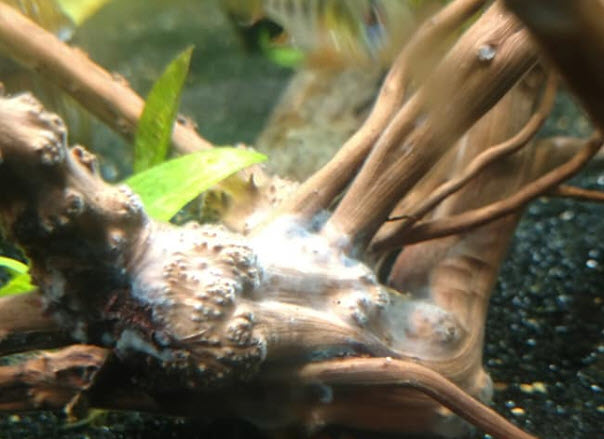
White Water Mold can be a Problem
This is not a myth. It can be true. It is common for wood to get a white filmy “water mold” (some call this a “biofilm”) on it and to smell a little bit. This typically only lasts four or five weeks. But if the mold goes longer, the smell becomes too bad and or the wood begins to disintegrate, it is too soft and/or weathered to be in the water and will have to come out. This happens more often with wood which is scavenged from the woods rather than from the water. For more on this see the link below:
16.10. Water Molds
Conclusion
If one has a piece of wood for the aquarium simply smell it first. If there is no turpentine or chemical smell; weight it down, toss it in and see what happens. Sometimes the water turns brown and activated carbon needs to be added. Sometimes the wood starts rapidly falling apart, smelling badly and has to be removed from the tank. And sometimes the wood is fine for years.
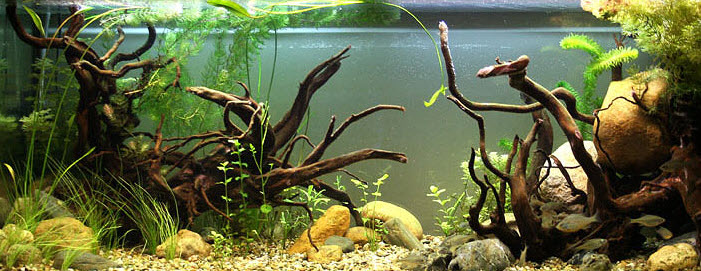
Rocks
Many social media questions are of the variety “Are these rocks and wood OK for my aquarium?” Like wood, all rocks found in Nature are safe for use in the aquarium. Rocks , like wood, have many myths surrounding them. These myths are examined at length in this link:
14.3. Rocks
.
Return to Equipment Menu
.
Aquarium Science Website
The chapters shown below or on the right side in maroon lead to close to 400 articles on all aspects of keeping a freshwater aquarium. These articles have NO links to profit making sites and are thus unbiased in their recommendations, unlike all the for-profit sites you will find with Google. Bookmark and browse!
.

Roberta says
I absolutely appreciate this as someone who needs to know the “why” the science here made so much more sense to me than everything I could find on YouTube, TikTok or any other website. No one was providing facts, sources or details and it was driving me nuts. Thank you for your time!
Jay C. White Cloud says
Brilliant…So pleased to have found this…!!!…for future reference when client ask or “idiots” argue the points there in…LOL!!!…This information presented is exceptional, and that assessment is grounded in over forty years of extensive experience in the professional design of natural biome enclosures including aquariums, vivariums, paludarium (et al.) My background knowledge and experience is further enhanced by my professional work within traditional carpentry and historic restoration, as well as professional knowledge of wood which includes various roles, including that of a professional arborist, sawyer, and timberwright, and numerous related disciplines. It is also important to highlight that even artificial intelligence (A.I.) sadly these days often perpetuates misconceptions about wood in aquariums, such as its alleged toxicity or tendency to decay, which are fundamentally incorrect. (per you Myth #10P In reality, some of the most prized timber in the world comes from “sinker logs,” or what certain cultures refer to as “water-rested” logs or timber. Many of these logs have been submerged for centuries, with some discovered in swamps or bogs that date back over 10,000 years before being harvested and processed into lumber. Only wood species that are already in the early stages of decay, very thin in size, or “dry rotted” will continue to deteriorate underwater, and even then, this occurs primarily in highly oxygenated environments and elevated temperatures typical of tropical waters. Only wood subjected to natural pelagic, estuary, with marine based organizes will be attacked and broken down naturally as this ecology has several pathogens that attack wood of virtually all species. The primary culprit being “shipworms” which are actually a mollusk species and not an annelid at all. These are the primary biological agent species to break down wood in the marine ecosystem. The internet is rife with various forms of misinformation, making this perspective a refreshing departure from the norm. Thank you for this enlightening contribution…!!!…WELL DONE…!!!
Joshua Hyde says
If I am doing an aquascape and not planning to put any fish in, do I even go through all the bother of cleaning (or even sealing) a piece of root and stump I pulled out of my front yard last spring?
Dave says
In reply to Jeremy. ….. Based on this article I would be hesitant to put into any aquarium eucalyptus wood which still smells strongly of eucalyptus. I’ve changed the narrative of the article to reflect the difference. Thanks for the heads up.
Jeremy says
Hi all,
Here’s an article: https://www.sciencedirect.com/science/article/pii/S0147651321011891
Acute toxicity of eucalyptus leachate tannins to zebrafish and the mitigation effect of Fe3+ on tannin toxicity
•
High concentrations of eucalyptus leaf leachate tannins can cause death of zebrafish.
•
Increasing DO concentration and Fe3+ content can slow toxicity of tannins to zebrafish.
•
Reactivity of tannins and protein substances blocks oxygen supply function in fish blood.
•
Formation of black water in eucalyptus plantations diminishes toxicity of tannins to fish.
Dave says
In reply to Kwame ….. Wood deterioration will have no effect at all on brown algae. Far more likely you need a few 95% water changes to get rid of phosphates.
Kwame says
How does one know that wood has deteriorated? Also what danger can deteriorated wood cause? My thank had been running for over a year and suddenly brown algae took over. I suspected my wood is deteriorating because my wood has become a little more “flexible” or so I thought. I don’t know if i can associate the growth in brown algae to the imagined decomposition of wood
Patrik Lundelin Vargas says
Where souls i share the pic of my awesome wood?
Pic of that should be in the article 😉
Patrik says
Great information! I found an awesome piece of wood, when i was trying to find some rocks to my shallow river tank (didnt find any).
The wood was way better find! But offcourse had my doubts, to put it in my tank.
So i started to search some info, and ended here.
Thx for the great info!
And yes, i did read everything!
Sagi says
Absolutely genius, regarding the idea of Not to boil nor bleach the driftwood!!
Only use hydrogen peroxide.
Dave says
In reply to Lou ….. Charcoal should work just fine in any aquarium. But it won’t seal in tannins.
Lou Anagnostopulos says
I have an incredible piece of driftwood that i desperately want to use. I would be an ultimate piece in my 125. The potential problem is that at some point someone tried to burn it in a campfire so most the “skin” is heavily charred. I wouldnt think charcoal could hurt, actually I think it may “seal in” what tannins are there but I’m far from being a chemist. Any thoughts?
Thank you, for looking at this and thank you for the best site on the internet for our hobby!
Lou
ant says
this article was very helpful. i’ve been searching the internet regarding a few really cool branches of tasmanian blue gum eucalyptus and was hesitant to try it out. i’m less hesitant now, but will will still canary test with 1 or 2 dither fish after ensuring the wood is sitting out a couple months and good and dry. thank you again for your insights, appreciate all the myth busting!
Jill says
Hi, I found a chunk of wood in the forest, at first I took it because it had amazing deterioration markings but it quite rotted at it fairly light. Would this be suitable to put in aquarium, Thanks
Dave says
In reply to Anna …. As long as the wood doesn’t smell like terpenes you will be just fine.
Anna says
LOVE your article! I found a spectactlar old root stump of pine wood that is well weathered (greyed and dry) I’m considering using it in my tank (will be an heavily planted deep substrate tank) and now feel encouraged by you. But I’m a bit worried about terpenes being an issue for the neocardina shrimp that I plan to have. I’d love to know what you think about this? Thanks!
Anonymous says
Nerd Alert!!!🚨 but amazing article and I read the whole thing thru. About to put in a piece of old pine tree into my planted aquarium today
Dave says
In reply to Doreen Yes, if there is an active bacterial disease breakout it can be passed by wood. If there hasn’t been any bacterial disease for at least four weeks it can’t pass the disease.
Doreen Simonson says
Hello Dave
I wanted to ask you if there is any possibility that wood that has been in a tank where the fish had a bacterial disease could possibly carry the disease to a new tank? I was thinking since wood is somewhat absorbent of water maybe there was a possibility? Thank-you for your website. Anytime I have any questions or concerns your website is the first place I go. Your answers are backed up by science which to me is extremely important.
Dave says
In reply to Debbie …. It is just some harmless high molecular weight natural oil. Nothing to worry about.
Debbie says
This was a very interesting article. I am new to planted aquariums and nature scrapping, so I read the whole article.
I like the natural wood floating lakes and that’s what I prefer to use. However, while boiling a piece, I noticed little old droplets in the top of the hot water. The wood didn’t have a smell. What could that be? And is it safe to use?
Dave says
In reply to Jason … Don’t bake wood. There is simply no reason to do it and it could cause a fire.
Jason says
Just curious what your thoughts on baking wood for a few hours at like 200 degrees would be
Dave says
In reply to Einar …. Take a drill and drill into the sappy areas. Smell the shavings. If the shavings smell “sappy” leave it outside to weather some more (like a year more!). If it doesn’t smell sappy, throw it in the tank. And snow won’t hurt anything.
Einar says
I have a large, beautiful piece of driftwood that definitely still has sap in it. Is there any way to get the sap out at home or should I leave it outside to weather some more? (Its going to start snowing soon, so I’m a little hesitant about leaving it outside)
Dave says
In reply to Elise …. I do not know what the “same” is. But since it is in the article on wood I assume you mean absorption of chemicals through the skin. Yes, the concentration of any chemical on wood will be far too low to even affect amphibians.
Elise says
Well, I guess it’s official, I’m a nerd. I read the whole thing 😆
Would you happen to know if the same goes for amphibians that absorb everything through their skin?